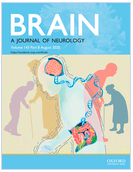 Myofibrillar myopathies constitute a small, fairly heterogeneous group of neuromuscular pathologies characterized, at the histopathological level, by the accumulation of protein products causing a disorganization of the internal architecture of the muscle fiber. Their clinical manifestations are varied, most often with damage to the distal muscles and potentially fatal cardiac abnormalities.
Myofibrillar myopathies constitute a small, fairly heterogeneous group of neuromuscular pathologies characterized, at the histopathological level, by the accumulation of protein products causing a disorganization of the internal architecture of the muscle fiber. Their clinical manifestations are varied, most often with damage to the distal muscles and potentially fatal cardiac abnormalities.
In an article published in August 2020, an international group of researchers reported four observations that led to the implication, for the first time, of supervillin in a particular type of myofibrillar myopathy. Supervillin is a sarcolemma protein encoded by the SVIL gene, localized more precisely to costamers and interacting with type II actin and myosin. The four reported cases were from two unrelated consanguineous families with onset of symptoms in childhood or adolescence. The clinical picture was more retractile than really in deficit and the level of creatine phospho-kinase was moderately increased. The cardiac involvement was inconstant and not severe. Antibodies permitted to objectify the supervillin deficiency in muscle sections and in immunoblotting. The authors emphasize the large number of lobulated fibers and the significant disorganization of the inter-myofibrillar network. The SVIL gene is expected to be integrated into the myofibrillar myopathy gene panels.
